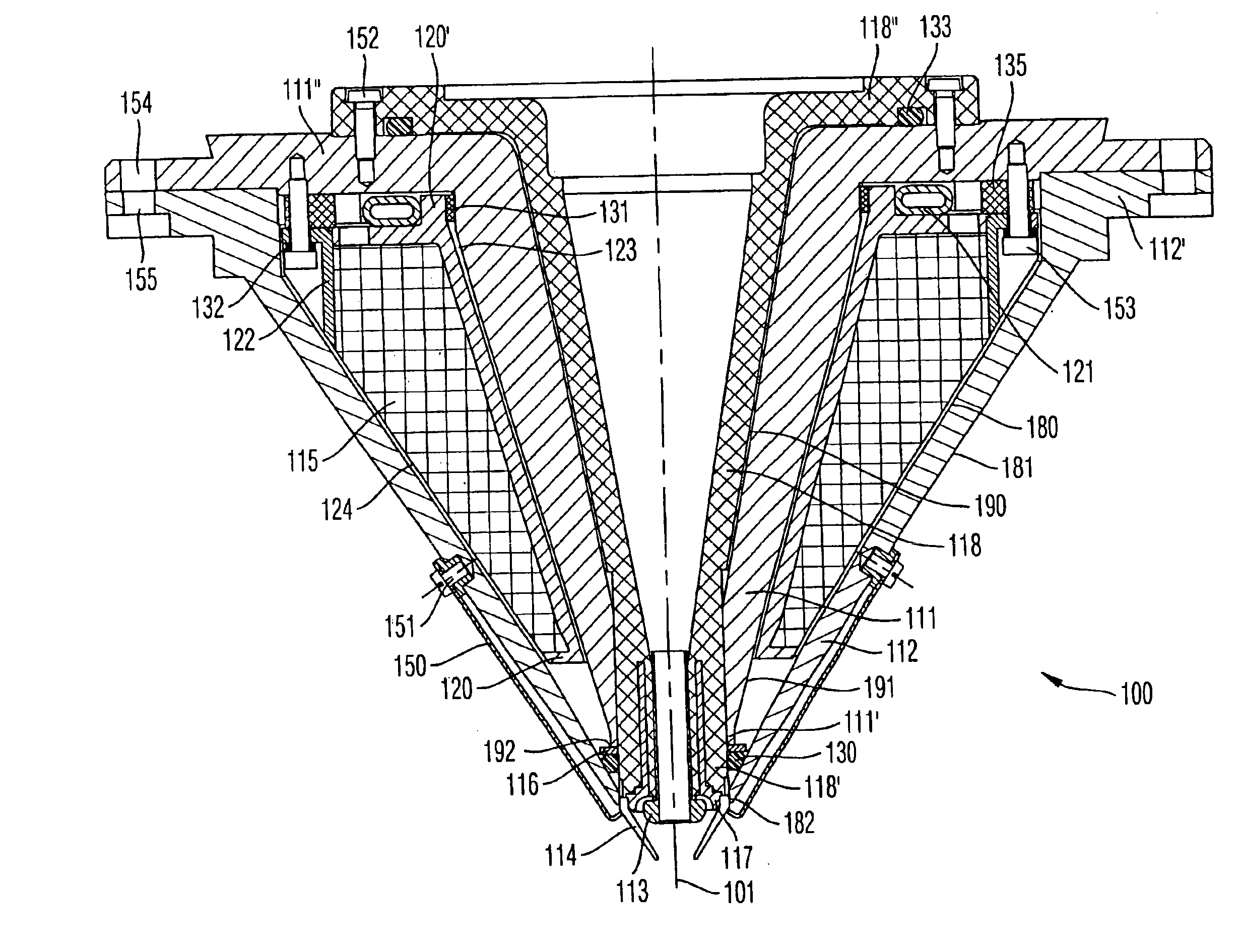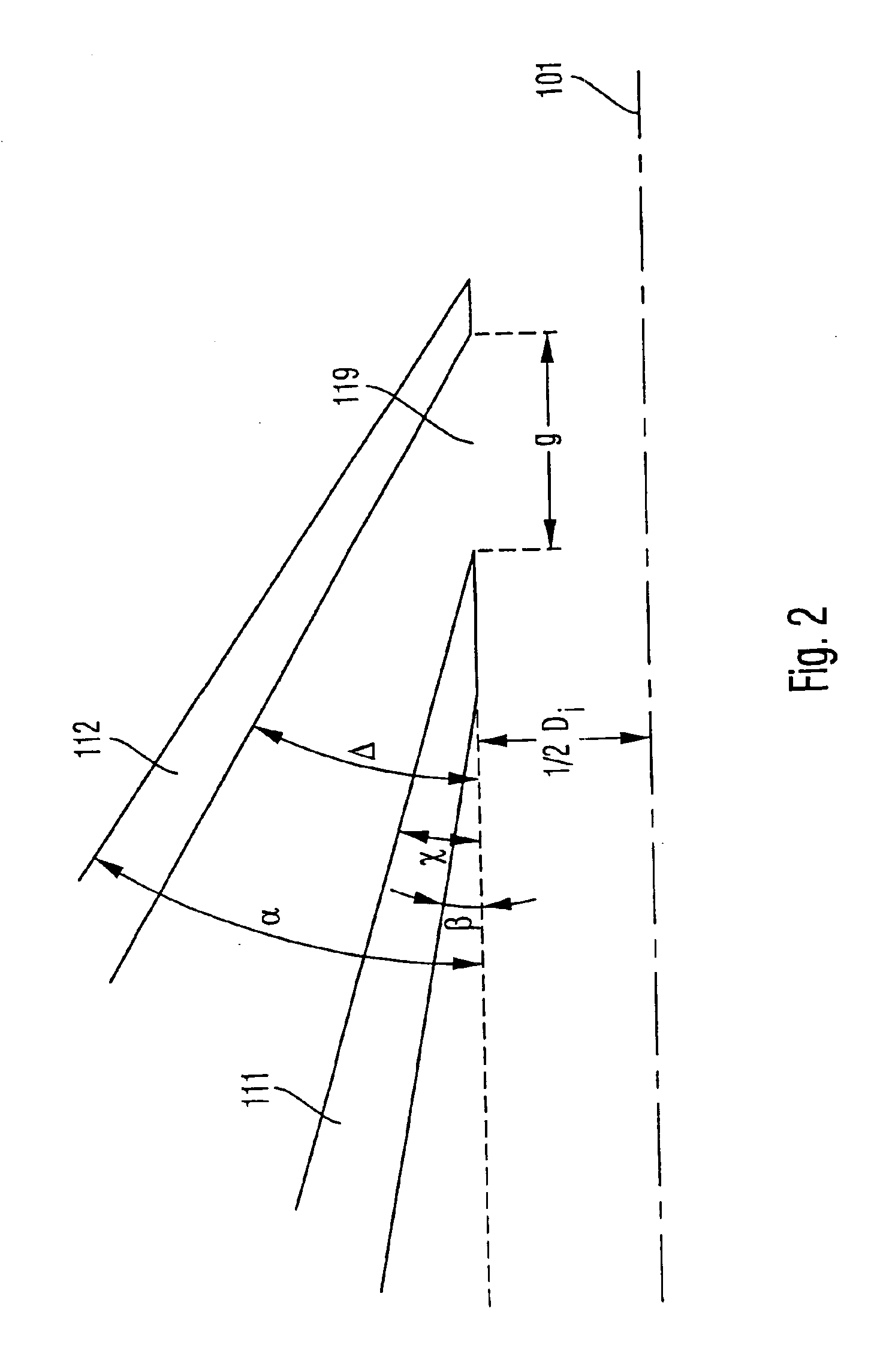Objective lens for an electron microscopy system and electron microscopy system
a technology of electron microscopy and objective lens, which is applied in the field of electron microscopy system, can solve the problems of putting specific demands on the electron microscopy system, increasing the number of complex and powerful devices, and increasing the number of optical instruments, so as to reduce overlap, reduce the effect of distance and larger working distan
- Summary
- Abstract
- Description
- Claims
- Application Information
AI Technical Summary
Benefits of technology
Problems solved by technology
Method used
Image
Examples
Embodiment Construction
[0077]An objective lens 100 shown in FIGS. 3, 4 and 5 serves to focus an electron beam in an electron microscopy system. The objective lens 100 comprises a magnetic lens as well as an electrostatic lens. Accordingly, the focusing is effected both electrostatically and magnetically. The electrostatic lens also serves to decelerate the electrons of the primary electron beam. The magnetic lens comprises a pole shoe arrangement with an inner pole shoe 111 and an outer pole shoe 112. Both pole shoes 111, 112 are formed to rotationally symmetrically surround a central optical axis 101, i.e., the beam path of a primary electron beam.
[0078]The inner pole shoe 111 is, in z-direction, of substantially conical shape and tapers in this cone-shaped region continuously towards the object plane. In a lowermost region in z-direction of the inner pole shoe 111, the latter comprises a hollow-cylindrical region 111′ which extends over about 2.2 mm in z-direction. The inner side 190 of the inner pole s...
PUM
 Login to View More
Login to View More Abstract
Description
Claims
Application Information
 Login to View More
Login to View More - R&D
- Intellectual Property
- Life Sciences
- Materials
- Tech Scout
- Unparalleled Data Quality
- Higher Quality Content
- 60% Fewer Hallucinations
Browse by: Latest US Patents, China's latest patents, Technical Efficacy Thesaurus, Application Domain, Technology Topic, Popular Technical Reports.
© 2025 PatSnap. All rights reserved.Legal|Privacy policy|Modern Slavery Act Transparency Statement|Sitemap|About US| Contact US: help@patsnap.com



